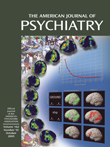Morphology of the Anterior Cingulate Gyrus in Patients With Schizophrenia: Relationship to Typical Neuroleptic Exposure
Abstract
OBJECTIVE: The anterior cingulate gyrus is a pivotal component of brain networks directing affective and cognitive functions, and abnormalities of the anterior cingulate gyrus may be involved in the pathophysiology of schizophrenia. However, magnetic resonance imaging studies of the morphology of this region have been few and the results inconsistent. Many of the studies have not accounted for confounding factors such as gender, handedness, or clinical variables such as neuroleptic exposure. METHOD: The morphology and clinical correlates of the anterior cingulate gyrus were evaluated in a group of 30 right-handed male subjects with schizophrenia and a comparison group matched for age, sex, and handedness. The patient group was specifically designed to provide measures of multiple phenomenological differences such as severity of illness, duration of illness, and exposure to typical neuroleptics. RESULTS: The patient group had a significantly larger left anterior cingulate gyrus volume relative to comparison subjects, whereas right anterior cingulate gyrus volume did not differ between groups. Depth of the left anterior cingulate gyrus was significantly correlated with neuroleptic exposure, indicating that greater exposure to neuroleptics was associated with greater cortical depth of this region. There was no significant relationship between anterior cingulate gyrus morphology and duration of illness or severity of symptoms. CONCLUSIONS: Anterior cingulate gyrus depth in subjects with schizophrenia is directly related to typical medication exposure (the greater the exposure, the thicker the anterior cingulate gyrus) but not to other clinical variables such as length of illness or symptom severity. Future research is needed to determine the functional consequences of these changes and relationship to atypical neuroleptic use.



